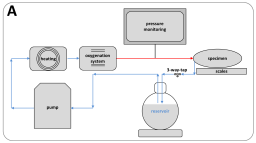Extracorporeal perfusion of isolated organs of large animals – Bridging the gap between in vitro and in vivo studies
Main Article Content
Abstract
Since the early 20th century, extracorporeal perfusion of large animal organs has been used to investigate a broad variety of research questions, thereby overcoming common drawbacks of in vitro studies without suffering from ethical concerns associated with live animal research. The technique is in accordance with the 3R principles and represents an excellent opportunity to investigate the physiology of organs in detail under standardized conditions. It is also suitable for the translation of basic pre-clinical research into a more relevant arena prior to or avoiding live animal research altogether. Furthermore, organ perfusion has also been an important tool in developing methods of organ preservation for transplantation surgery. Yet, due to the nature of the experiments, only short-term observations can be made and while cells are still exposed to their regional secretome, the whole organ itself is isolated from the body and correlations between organ systems cannot be taken into consideration. This review gives an overview over the history of extracorporeal perfusion of large animal organs and limbs, highlighting major achievements in the field and discussing different experimental set-ups. Advantages and limitations of the technique are presented. Prospective future research perspectives, which may include tracking of specific cell types and study of their distinct behavior towards different stimuli, are given to illustrate the relevance of this method.
Article Details
Articles are distributed under the terms of the Creative Commons Attribution 4.0 International license (http://creativecommons.org/licenses/by/4.0/), which permits unrestricted use, distribution and reproduction in any medium, provided the original work is appropriately cited (CC-BY). Copyright on any article in ALTEX is retained by the author(s).


